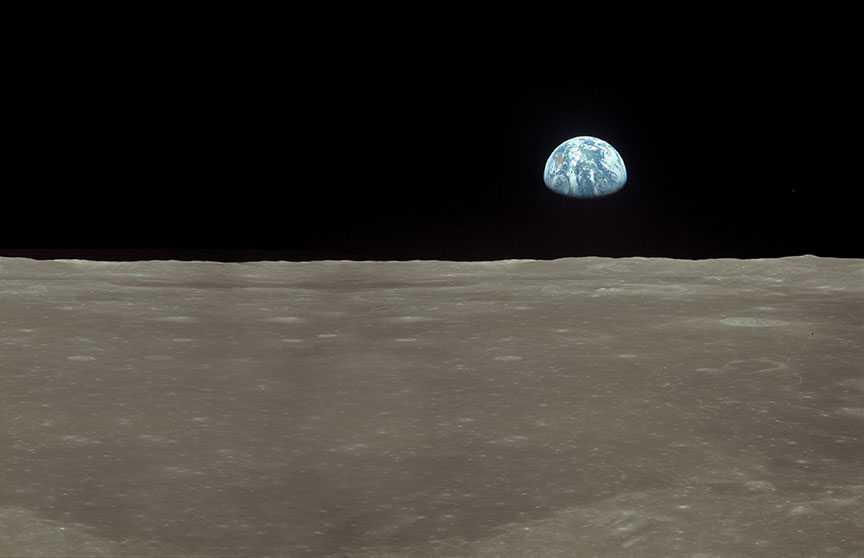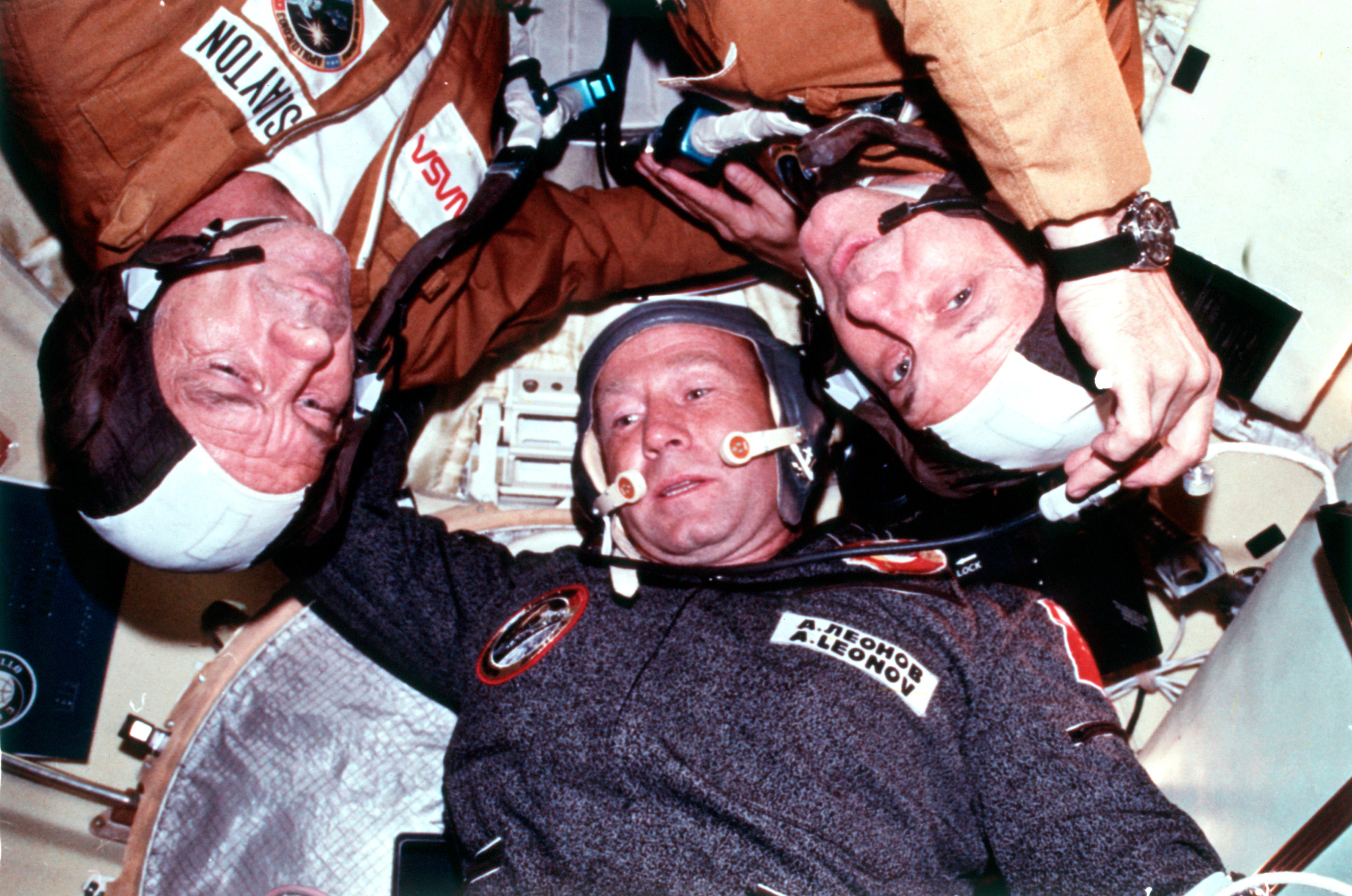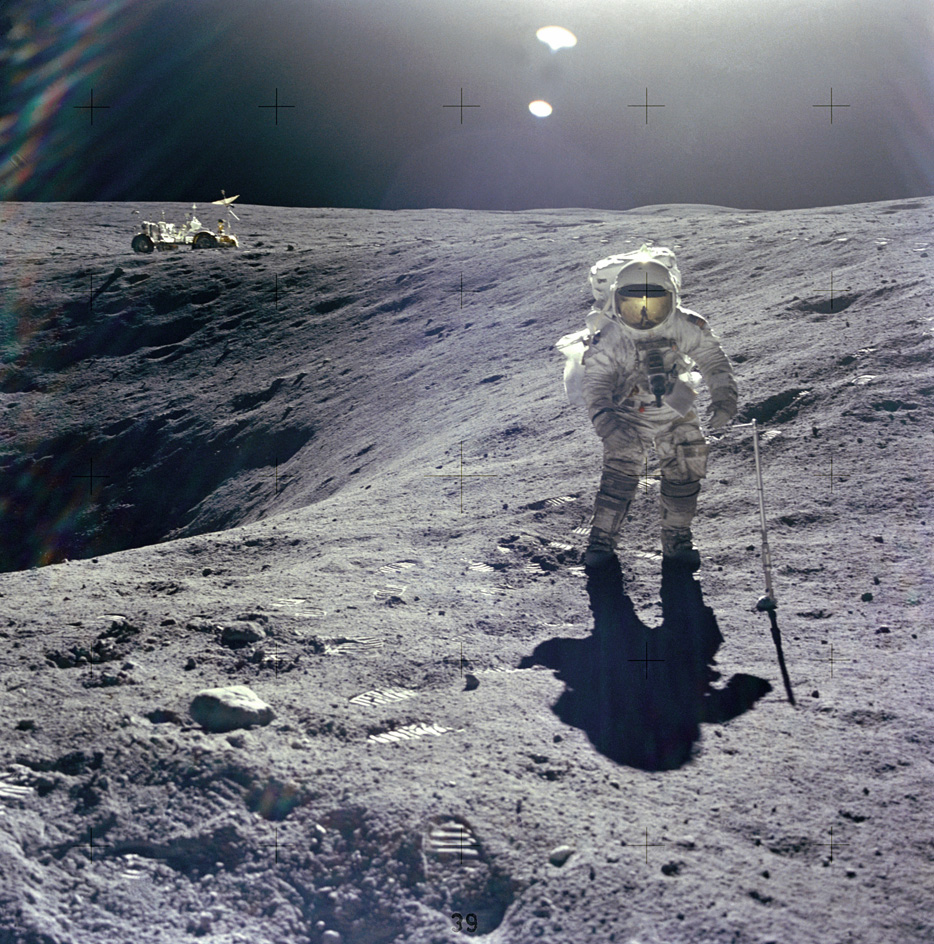
Apollo was the United States space program that carried people to the moon. The program lasted from 1961 to 1975. It was conducted by the National Aeronautics and Space Administration (NASA). Each Apollo mission carried three astronauts. In moon-landing missions, two of the astronauts landed on the lunar surface. The third astronaut stayed with the orbiting capsule. The program landed a total of 12 astronauts on the lunar surface.
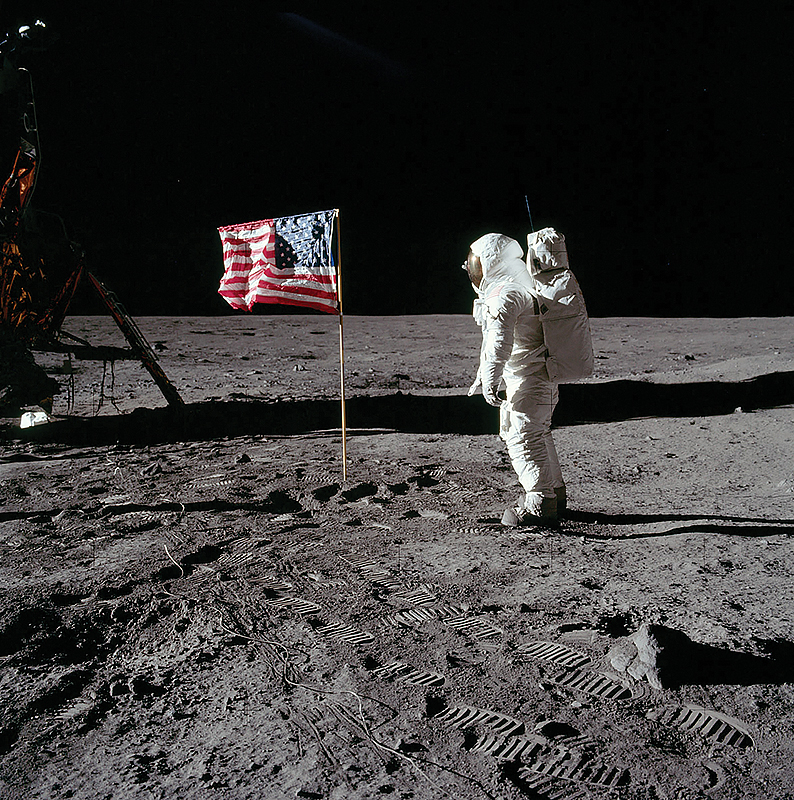
Apollo’s rocket, the Saturn V, had to produce enough power to propel three astronauts on the roughly 250,000-mile (400,000-kilometer) journey from Earth to the moon. The rocket measured 363 feet (111 meters) in height, taller than a 30-story building. It weighed 6.2 million pounds (2.8 million kilograms). The rocket had three stages, each with its own engines and fuel supply. The first stage lifted the rocket and its payload to an Earth orbit of about 40 miles (64 kilometers). The two remaining stages accelerated the capsule to a speed needed to break free of Earth’s gravitation and reach the moon.
At its top, the Saturn V carried a craft consisting of three parts or modules. They were (1) the command module, (2) the service module, and (3) the lunar module. The command module was a small, three-seat capsule. It was the living quarters and control center for the astronauts. It was also the module that returned the astronauts to Earth’s surface. The service module sat directly behind the capsule. It carried engines along with thrusters to control the craft’s flight. The service module would also provide such things as electricity, oxygen, and water to the command module, as well as carry communications equipment and fuel. The lunar module was built to take two astronauts down to the lunar surface and back to the orbiting command and service modules. Three of the missions carried a lunar roving vehicle (LRV). The LRV was a lightweight, four-wheeled “moon buggy” that enabled the astronauts to explore more of the moon’s surface.
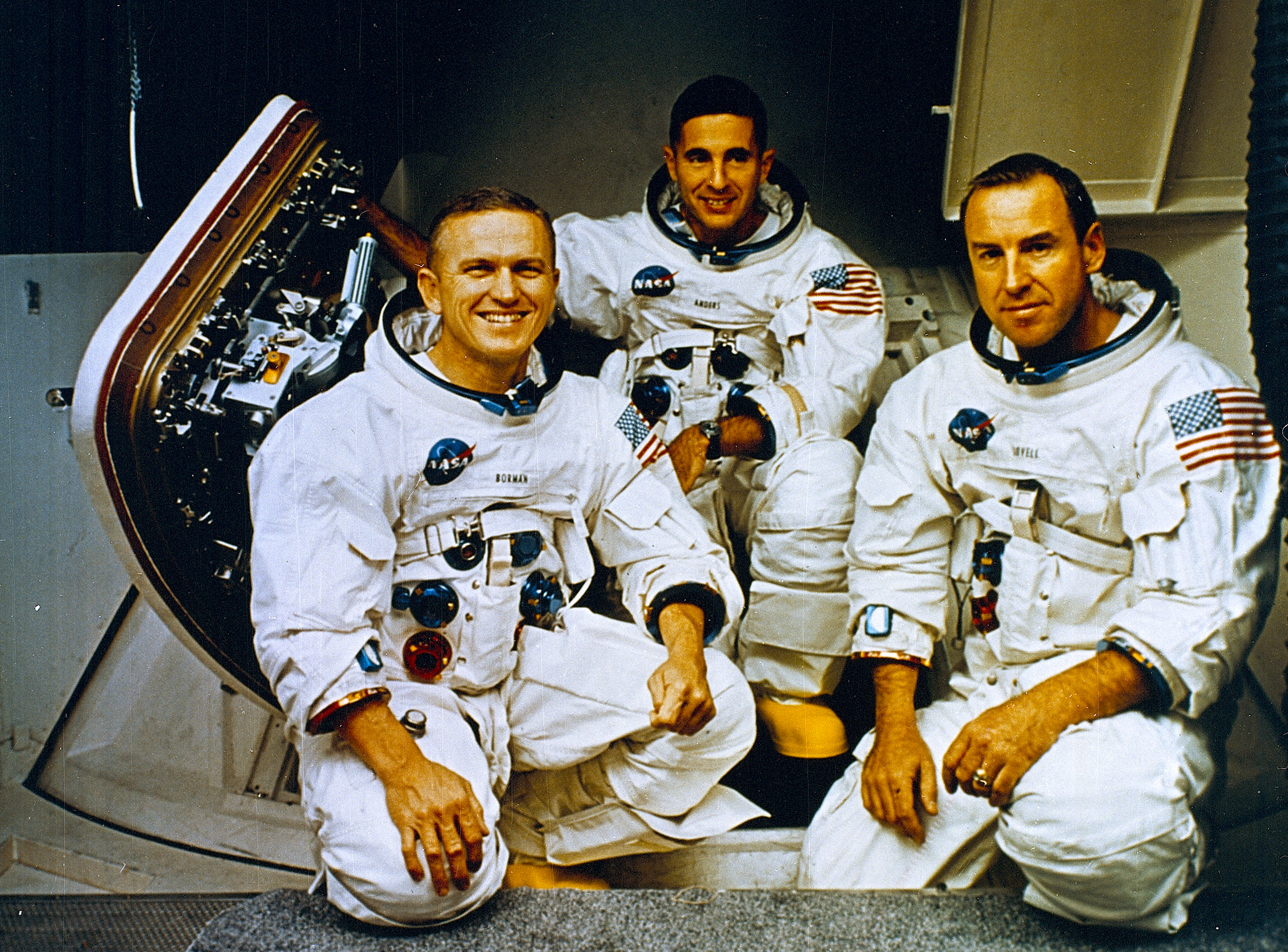

Three Apollo missions circled the moon without landing. The first landing occurred during Apollo 11 on July 20, 1969. Astronauts Neil Armstrong and Buzz Aldrin set down on the flat feature known as the Sea of Tranquility. The third Apollo 11 astronaut, Michael Collins, stayed aboard the orbiting command module.
Over the course of the Apollo missions, lunar explorers took photographs and made measurements of the moon’s airless environment. The astronauts installed scientific instruments and left them behind to continue transmitting data. The astronauts collected a total of about 842 pounds (382 kilograms) of rocks and other samples. Scientists continue to study the samples for clues to the origins of Earth, the moon, and the solar system.
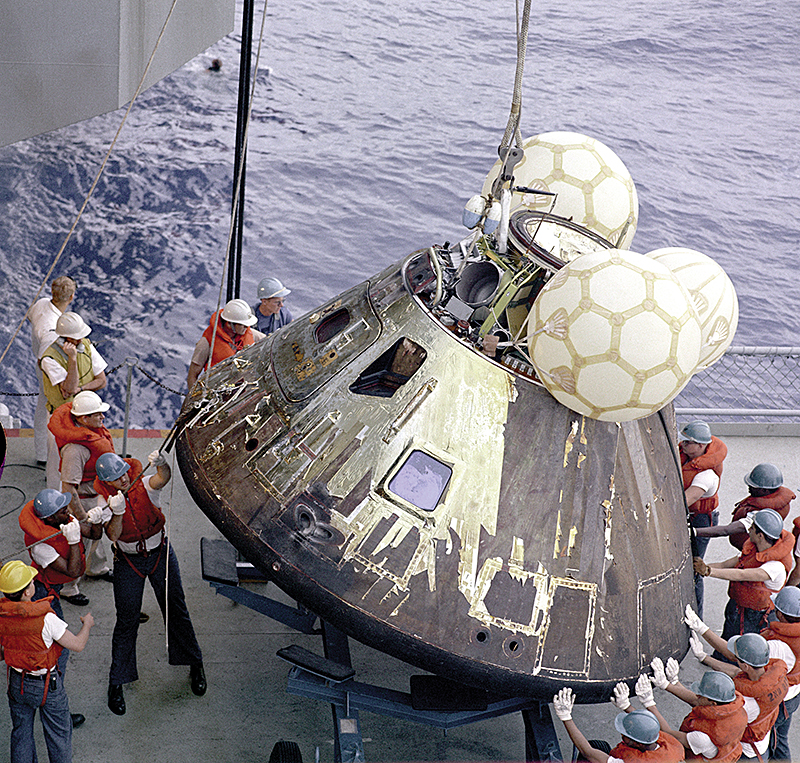
The Apollo program suffered two major disasters. Apollo 1 was scheduled for launch on Feb. 21, 1967. On January 27, however, a fire during a launch pad test took the lives of astronauts Roger B. Chaffee, Virgil I. (Gus) Grissom, and Edward H. White II. The second disaster occurred during Apollo 13. On April 14, 1970, about 56 hours after launch, a short circuit caused an explosion in one of the service module’s two oxygen tanks. The blast severely damaged the systems that supplied electricity and oxygen to the command module. The astronauts— Fred W. Haise, Jr., James A. Lovell, Jr., and John L. Swigert, Jr. —had to move into the lunar lander for the oxygen they needed to return to Earth. During the flight, the crew, with considerable help from NASA engineers on the ground, overcame the lack of power, a shortage of water, the loss of cabin heat, and the build up of carbon dioxide in the vehicle to return safely to Earth.
The last Apollo flight was not a mission to the moon. In 1972, the United States and the Soviet Union agreed to participate in the first international piloted space mission. They planned to perform an orbital rendezvous between a Soviet Soyuz capsule and a U.S. Apollo capsule. The Apollo-Soyuz Test Project launched on July 15, 1975. The Apollo capsule, commanded by astronaut Thomas P. Stafford, successfully linked up with the Soyuz capsule, commanded by cosmonaut Alexei A. Leonov.
